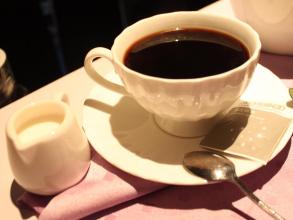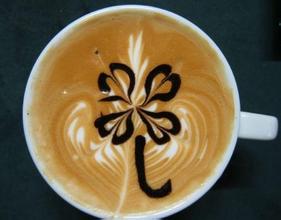Introduction to the flavor and taste of Guatemalan coffee manor with special aroma and sweet acid
The capital, Guatemala City, is the largest city in Guatemala and the city of Central America. Area
Map of Guatemala
Map of Guatemala
996 square kilometers with a population of 3.1 million (2010). Founded in 1524. Due to repeated damage by the earthquake, he moved to his present site in 1776. How low buildings are in the city. It has been the capital since 1779. It was the capital of the Central American Federation from 1823 to 1838. A distribution center for coffee, corn, wheat and other agricultural products. Has more than half of the country's industries, mainly cement, wood processing, textile, tobacco, food processing and so on. Transportation hub, the railway to the northeast and southwest to the port of Barrios and San Jose respectively. There are universities (founded in 1676), academies of sciences, museums and so on. The Central American Common Market is headquartered here. There are monuments of Mayan culture on the outskirts of the city. Tourist centers include Lake Attila, the old capital of Old Guatemala, the ancient Mayan city of Tikal and some other famous cities such as Kesaltnango and Chichikas de Nango. Guatemala City is the national economic, cultural and transportation center. In the plateau of the southern volcanic area, the altitude is 1493 meters above sea level, but the climate is extremely mild, with flowers blooming all the year round, green grass and little seasonal change, so the coffee produced in the highland is mellow and has a good sour taste, which is well received. It is the best material for blended coffee.
Coffee varieties:
Arabica species (Arabica):
It accounts for 85% of total coffee production, including Brazil, Colombia, Guatemala, Ethiopia and so on. The beans are turquoise, thin and small, with special aroma and sweet acid, which is good to drink with other coffee. Excellent quality, more suitable for public taste.
Robada species (Robusta):
Roughly planted in Java, Indonesia, drought-resistant and insect-resistant; bitter taste, but bitter with fragrance, especially after cooling with a unique sweet taste, suitable for the preparation of cold coffee, mellow and extremely bitter.
Liberia plus species (Leberica):
The quantity of this variety is very small, most of it is used to synthesize coffee and make coffee essence, it is difficult to see in the market, the quality is not good, and the flavor of the single product is not good.
There are few places in the world that offer a variety of high-quality coffee beans, such as those produced in Guatemala. The excellent quality of Guatemalan coffee beans is due to the unique conditions of their producing areas, including different climate change in each region, rich soil formed by volcanoes, abundant natural water resources, high-altitude mountains and shady and moist forests.
Guatemala has seven major coffee producing areas: Antigua,Coban,Atitlan,Huehuetenango,Fraijanes,Oriente and San Marcos.
The coffee beans in each producing area have their own characteristics, and they have won a lot of praise for Guatemala in the international community, especially the perfect coordination of the sour, sweet and mellow texture of Antigua; with a touch of smoke and a little more emphasis on its mystery, you will have a reason not to look for alternatives everywhere after tasting.
Guatemalan coffee beans are mostly cultivated in high-altitude volcanic soils belonging to the most advanced Arabica varieties. Due to the long ripening period, the beans are medium and dense (Guatemalan coffee beans are graded not on the basis of particle size, but on the basis of shortcomings), and the bean color is dark turquoise. The unique sour taste of fragrance, mellow, sweetness and freshness is characterized by the aroma and taste of coffee beans hidden in its sour taste. Therefore, coffee beans with this characteristic can be called first-class coffee beans. The name of the product is suitable for the taste characteristics of baking degree.

Important Notice :
前街咖啡 FrontStreet Coffee has moved to new addredd:
FrontStreet Coffee Address: 315,Donghua East Road,GuangZhou
Tel:020 38364473
- Prev

Introduction to the flavor of Java coffee producing area with soft, smooth and well-balanced coffee
Java coffee is full-bodied and full-bodied, with clear, high-quality acidity, high balance, and sometimes nutty taste. In terms of appearance and quality, Java coffee is excellent, just like a woman's vaguely charming, charming and just right, memorable. Java Coffee Atlas each caffeine variety is of different origin and has its own strong
- Next

Introduction to the characteristics of Kilimanjaro Coffee Flavor Manor with round taste
The national emblem of Tanzania was formulated in 1964 on the basis of the Tanganyika national emblem. The central shield, the national emblem of Tanzania, is divided into four parts: the top burning torch cuts through the pre-dawn darkness and lights the spark of freedom and hope; it is painted with the flag of Tanzania; there are crossed tomahawks and spears on the red ground below; and finally, India.
Related
- Detailed explanation of Jadeite planting Land in Panamanian Jadeite Manor introduction to the grading system of Jadeite competitive bidding, Red bid, Green bid and Rose Summer
- Story of Coffee planting in Brenka region of Costa Rica Stonehenge Manor anaerobic heavy honey treatment of flavor mouth
- What's on the barrel of Blue Mountain Coffee beans?
- Can American coffee also pull flowers? How to use hot American style to pull out a good-looking pattern?
- Can you make a cold extract with coffee beans? What is the right proportion for cold-extracted coffee formula?
- Indonesian PWN Gold Mandrine Coffee Origin Features Flavor How to Chong? Mandolin coffee is American.
- A brief introduction to the flavor characteristics of Brazilian yellow bourbon coffee beans
- What is the effect of different water quality on the flavor of cold-extracted coffee? What kind of water is best for brewing coffee?
- Why do you think of Rose Summer whenever you mention Panamanian coffee?
- Introduction to the characteristics of authentic blue mountain coffee bean producing areas? What is the CIB Coffee Authority in Jamaica?

